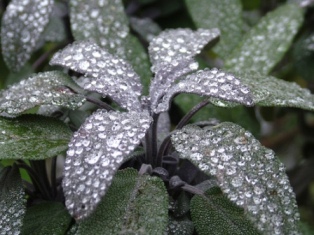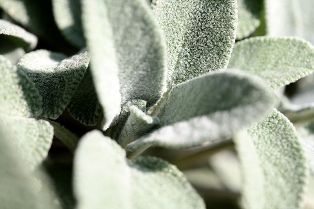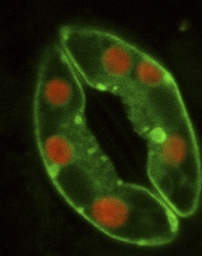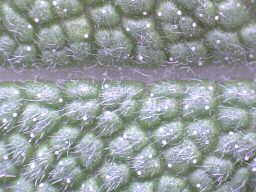
Adaptation
Sage is a well adapted plant that inhabits drier habitats, especially in the Mediterranean region of Europe. Many Mediterranean shrubs have adapted to deal with drought conditions and lots of sun. The goal of many of these shrubs is to reduce transpiration and conserve water. Transpiration is a term used to describe the process of moisture evaporating from a plant. Being able to control this process is vital in dry areas such as the Mediterranean. Some adaptations that are favored in the sage plant are reduced size, upright orientation, hairiness of leaves, thick waxy cuticle, reduced stomata size and production of essential oil.

Essential oils: The oils found in the leaves of sage are very volatile oils that serve as protection for the plant. The essential oils are good deterrents of insects and other herbivores that may be looking for a snack. These same essential oils have many other uses that are beneficial for human use.
Upright orientation and reduced size: Both the upright orientation and reduced size of sage are adaptations to allow the plant to be extremely efficient. In a very dry environment where water is scarce, a smaller plant that requires less water to survive will fair better than a larger plant that requires more water to survive.
Thick waxy cuticle: Unlike other plants, desert plants have a waxy cuticle layer in their leaves rather than having porous leaves without a waxy cuticle. This is an adaptation that helps keep water in the plant and reduce transpiration.
Hairy leaves: Hairs on the surface of leaves are used by plants
to reflect sunlight from their surface and reduce the movement of
air on their surface, which leads to less transpiration.
less transpiration.

Reduced stomata size/ Fewer stomata: Stomata are small openings on the plant that have guard cells on either side to control how much they can open. These stomata allow carbon dioxide into the leaves for the process of photosynthesis. However, at the same time, water is able to get out. This loss of water could be detrimental to desert plants that don't encounter much water throughout the year. Smaller and fewer stomata in a plant like sage helps to prevent water loss.
For more information regarding how the plant sustains itself, continue to Nutrition.
All organisms adapt differently! See how the Magician's Cone Snail adapts to its environment!
To see how other organisms adapt to their environment, check out the Multiple Organisms web page.
